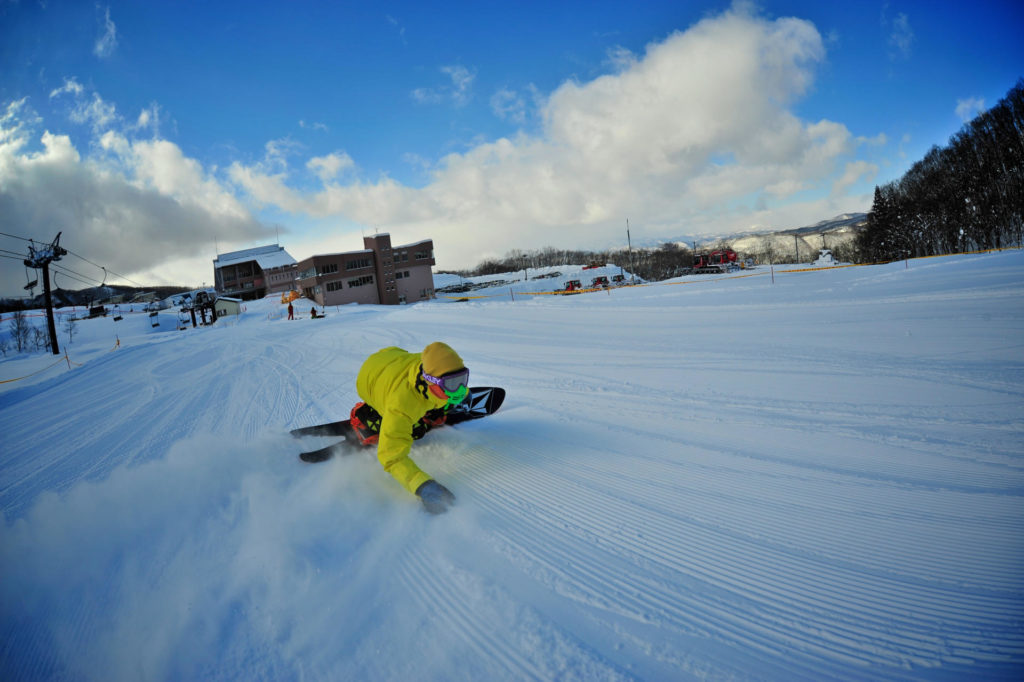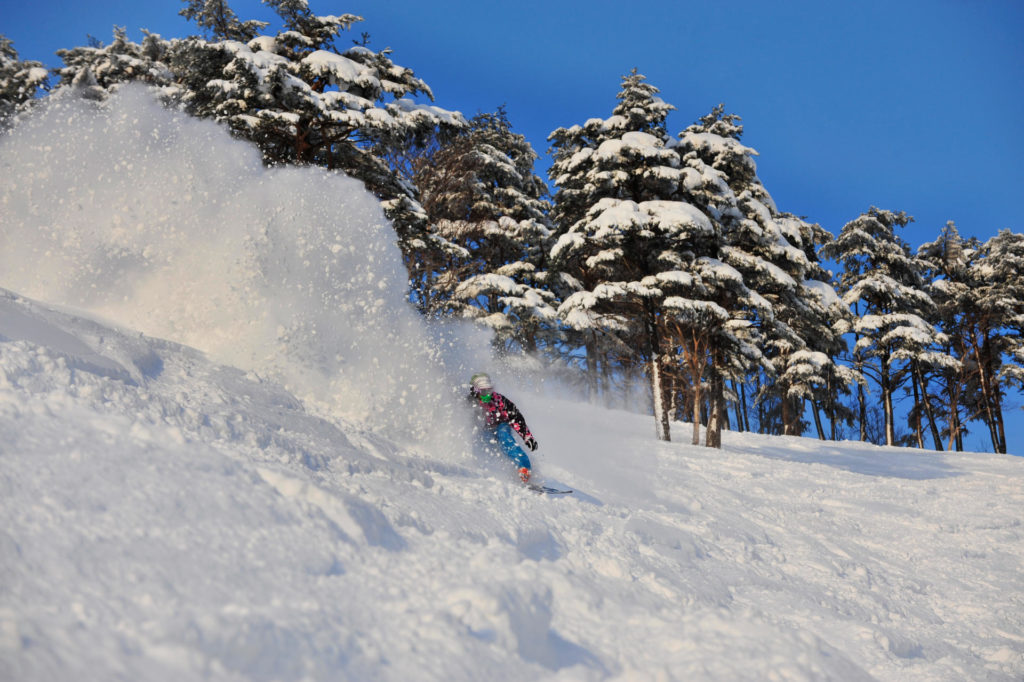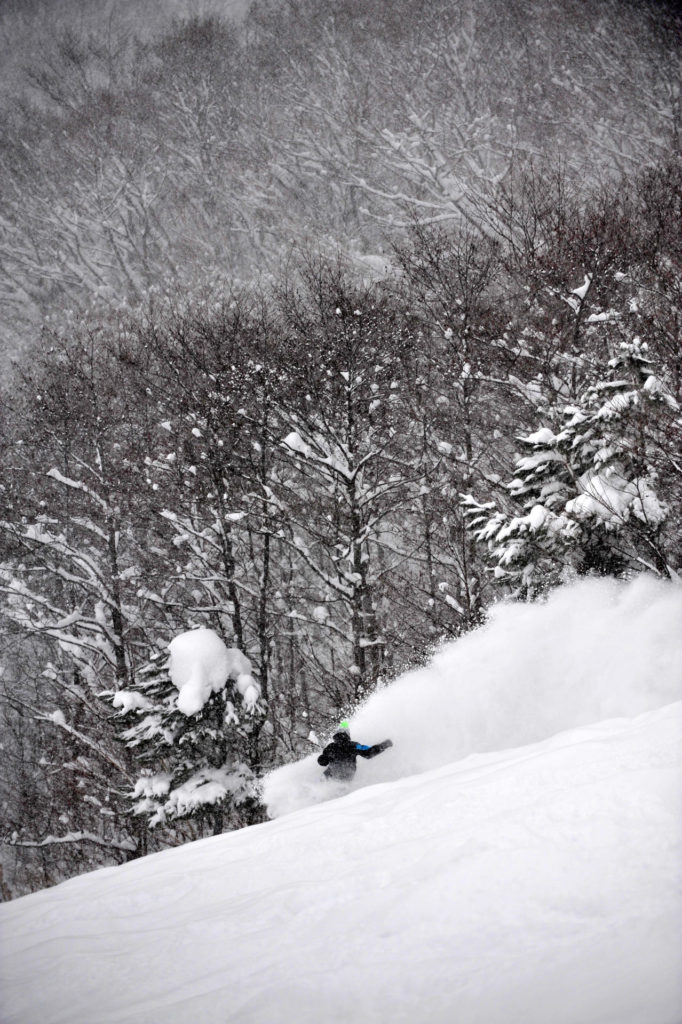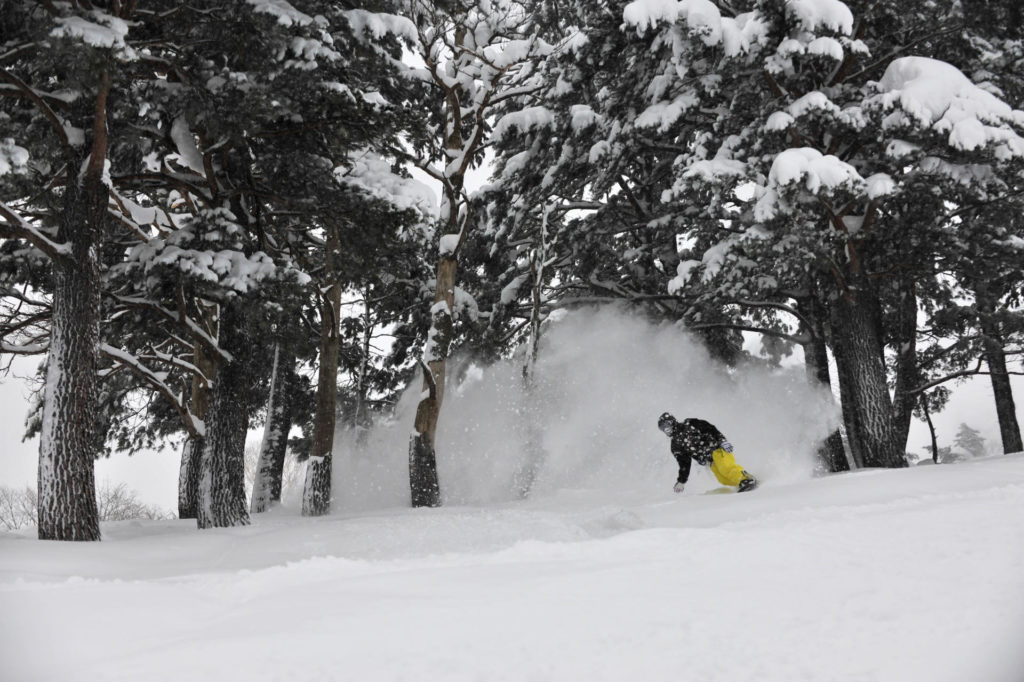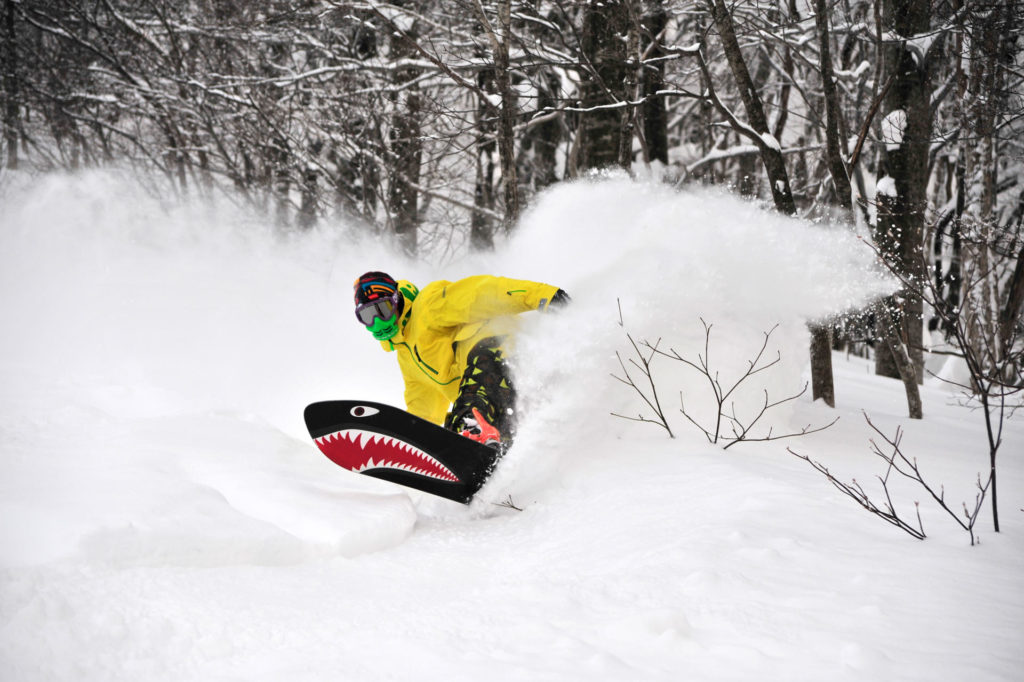Akita Prefecture’s Lake Tazawa region barely registers on Japan’s tourism radar. Yet it is paradise for winter lovers and a “Top Five” destination for hot spring fanatics. I first traveled to Tazawa-ko Ski Resort about six years ago after hearing rumors of long, powder-filled runs, stunning lake views and friendly locals. I got up there late in the season and enjoyed some fun spring conditions but vowed to return and “get it good” during Tohoku’s peak winter season. What follows are the chronicles of my triumphant return.
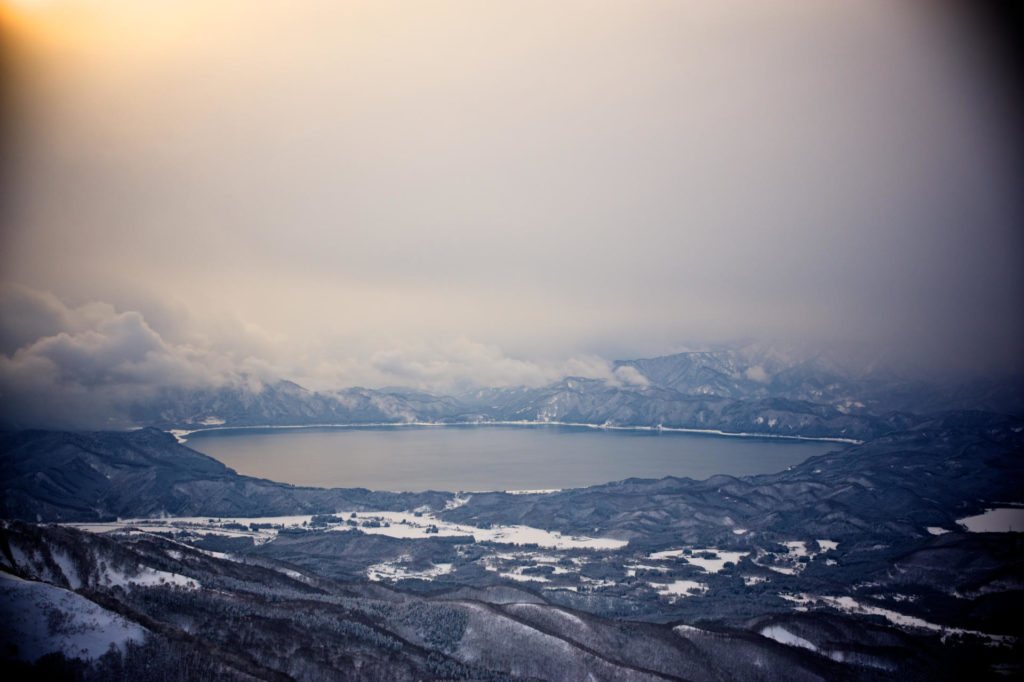
First, a little geography. Check out that map of Japan you probably have pinned up on your wall somewhere or stuck in the glove box of your car. At the center of Akita Prefecture you’ll see an almost perfectly round crater lake. This is Lake Tazawa (Tazawa-ko), Japan’s deepest lake at 423 meters, known for a striking mirror effect that mimics the color of the passing seasons, from jade green to sapphire blue.
There is a mysterious atmosphere here, perhaps due to the long spiritual history of the area where you will find famous shrines such as Goza-no-Ishi on the north shore and a huge statue of Buddha towering over the area near the lake.
If you live in Hokkaido like me, the best way to travel to Akita is by car. Take the ferry to Akita Port, and from there it is a scenic 90-minute drive to the lake region. If you are coming from the Kanto area, you will probably want to hop on the Komachi Shinkansen (bullet train). You’ll pull into Tazawa-ko Station three hours and 10 minutes later. The bullet train has been arriving at this nice little station since 1997, and from here everything is a short taxi or bus ride away.
There are three things you will want to do when you visit Tazawa-ko in winter. Ski, ski and ski. OK, maybe that’s unfair. Lets say ski, soak and, uh, survey? Ski at Tazawa-ko Resort, soak your weary bones in the famous Nyuto Onsen and then peer out at the view of the beautiful lake. This is exactly what we did.
During the first week of February, my crew drove our collective cars off the ferry in Akita and into a brewing storm. We arrived at our rental house near the base of Tazawa-ko Resort in the early afternoon, welcomed by the view of Mt. Komagatake.
The resort’s courses lie on the lower slopes of this triple-peaked mountain. The highest peak (Onamaedake at 1,637 meters) is an active volcano that last erupted in 1970—not so long ago, really. Volcanic activity means big mountains and hot springs, my favorite combination.
The resort has 13 courses, the steepest of which is the Ginrei Paradise course at 34 degrees and, my personal favorite, the Kuromori course. On the far left of the resort, a single chair lift accesses this steep course, but don’t show up late; the lift closes at 10:30 a.m. on weekdays.
Less than half of the course is groomed while the rest is a powder paradise, as most of the people riding the ancient lift are young local ski team kids training on the steep and groomed section of the slope.
You won’t find a gondola at Tazawa; just six lifts with two nice hooded quads boasting a capacity of 9,699 passengers per hour. But don’t worry; you will never see that many people. Even on the weekend, we did not stand in line once or rush to find fresh powder.
Tazawa-ko Resort has a long history of ski racing, and they certainly seem to be doing their best to produce the next generation of ski champions. We stayed close to a week, and every day there was either a race or a group of kids in speed-suits bashing gates for practice.
The resort’s focus on racing seems to keep the patrol and everyone so busy, they don’t have time or interest to worry about where everyone else rides. Japanese resorts are famous for ropes and signs—even fake patrol mannequins—to keep people on the course and out of the powder-filled tree runs. However, you won’t find that at Tazawa-ko. An air freedom from a long lost era still remains.
Darting in and out of the trees, we bounced from course to course, laughing at the ridiculous powder everywhere. The mountain is big and a lot of the courses are very wide, and this combination keeps the grooming to a minimum. The natural snow condition doesn’t mean it is not family friendly.
The wide rolling courses on the lower slopes are perfect for teaching a child or friend how to ski or board. Plus you won’t want to miss the resort center featuring a nice variety of local cuisine. I have never been a fan of ski resort food, but Tazawa-ko’s mouth-watering yakisoba, ginger ramen and other local cuisine items, all made fresh, changed my tune.
The resort generally faces west with stunning views of the lake while riding down—when you can see the lake, that is. Caught in a week-long storm, most days we explored the mountain while staying close together due to bad visibility. I would recommend staying on the hill until near sunset for the best chance to see the lake.
On more than one day, the clouds broke near sunset, and we were treated to panoramic shots of the lake that stopped us in our tracks. A natural spotlight shimmered on the lake as the sun sparkled off the towering Buddha statue. This image has been burned in my mind and my hard disk forever.
Nyuto Onsen
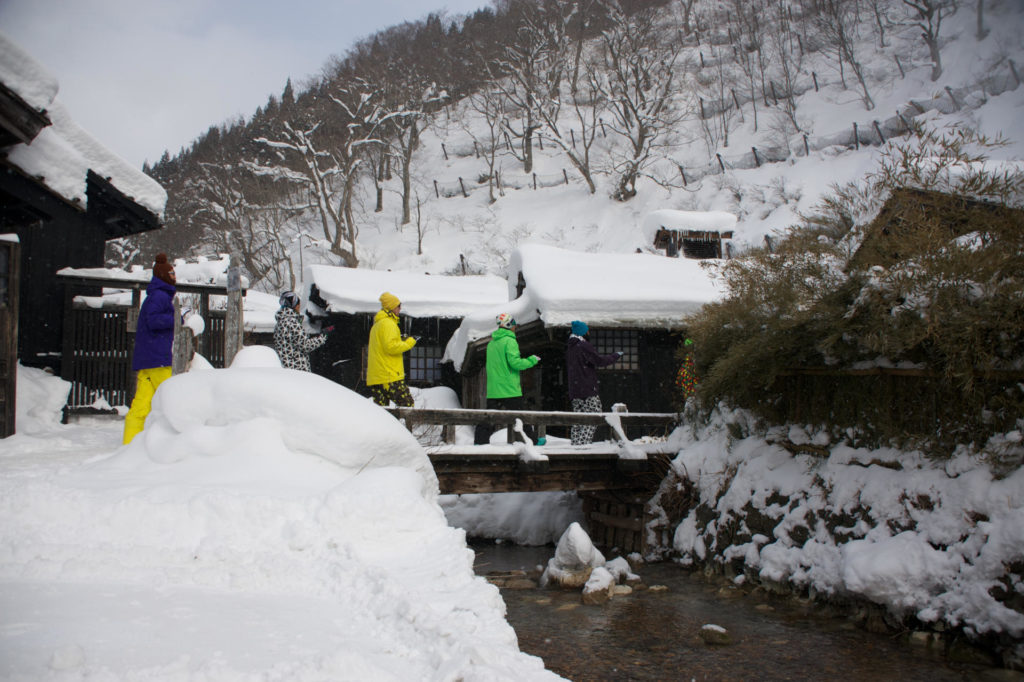
On the worst day of the storm, with the wind howling outside, we decided to spend a day at nearby Nyuto Onsen—soaking it up. Nyuto Onsen is made up of seven rather small ryokan (Japanese inns), each with its own hot spring source. One of the most famous is 350-year-old Tsurunoyu. Originally a place of therapy for the ruling lords of Akita, Tsurunoyu began welcoming the general public in the late 1600s.
The thatched roofed buildings have been well preserved, and you can still stay in one of the rooms that housed vacationing feudal lords so many years ago. The water at Tsurunoyu is milky in color, hence the name “nyuto,” which means “Mother’s Milk.” Be warned; nearly all the rotenburo (outdoor baths) at Nyuto are mixed bathing. The non-translucent water keeps most sights hidden, yet our crew of young mountain men-snowboarders seemed to have an unfortunate deterrent effect on ladies entering the bath.
Even today the hot springs are quite remote, cell phone service is patchy at best, and the long winding road in, although now made easy with today’s snow-clearing machines, seems to have kept Nyuto out of the 21st century. Soaking in the bath and watching the snow flakes fall and melt in the hot water, we imagined slipping back in time 300 years.
Tazawa-ko Cats
Consulting weather reports in our lodge at night, we realized this stubborn storm had no plans of leaving the area. Although sunshine was not in the cards, we decided to explore further into the backcountry with a cat tour to the 8th Station of Mt. Komagatake. Tazawa-ko offers a simple alternative to lift-serviced slopes with a one-way cat ride taking you up a long, winding road higher on the mountain. The cat tour departs from a now defunct ski hill about five kms. up the road.
In summer, the area is teaming with life, a high alpine wonderland of flower and fauna, but when the cat drove away and left us next to the simple mountain hut, there were no other signs of life as far as we could see. Not that we could see very far; the visibility was down to 20 to 30 meters, and the wind was blowing hard.
Tazawa-ko’s cat service does not come with any guiding and, although the terrain is not overly extreme, the conditions can be. I would recommend a high level of mountain navigation experience for those interested.
In spring, we’d take a short hike to the peak followed by a long run all the way back to the base of the ski area. This wasn’t an option on this day, so we stuck close to the cat road, looking for short lines and sections to make some turns. The snow was deep and we had a blast the whole way down. It’s a cheap, fun and little-known option for exploring the backcountry.
After five days of skiing, soaking and….surveying it was time for us to grudgingly move on. Such is the life for the vagabond winter bum. Rumors of deep powder in other places beckoned and new horizons to look upon—but not before one more run.
We snapped a few group shots at the top of the resort where we spotted three snowboarders who looked to be at least in their 60s. We chatted for a moment with the friendly couple and their friend—die-hard locals who started snowboarding about 10 years ago. They invited us to come back again soon and then, with a slash and a spray, they disappeared into the trees—and why not—there were no ropes stopping them. We enjoyed a nice 3K cruiser on the back to base ourselves.
Thank you, Tazawa-ko; we will be back.
Tazawa-ko Resort
たざわ湖スキー場
Tel: (0187) 46-2011
Web: www.tazawako-ski.com





